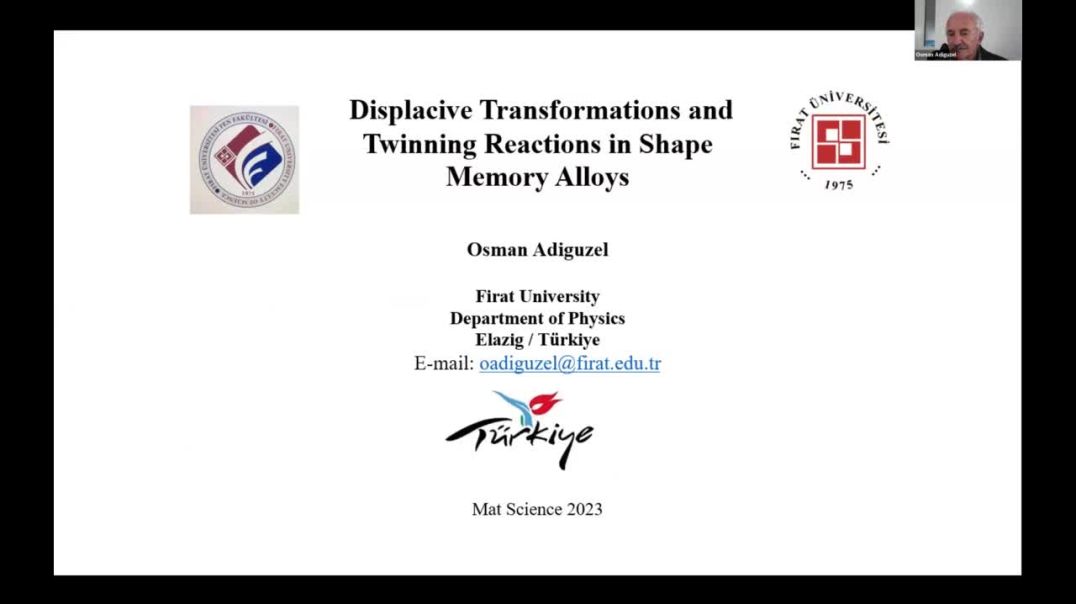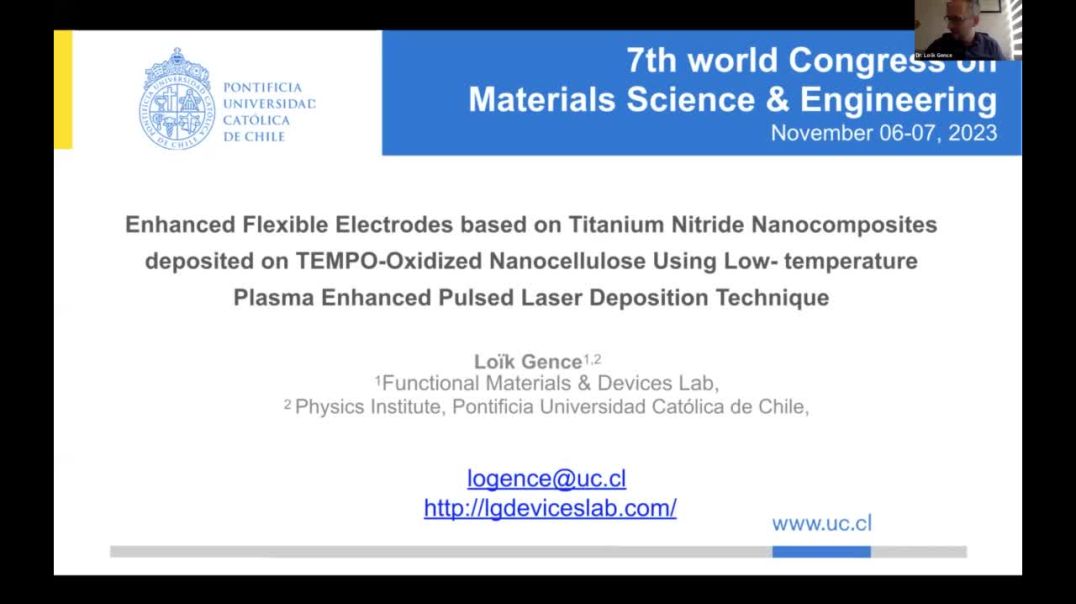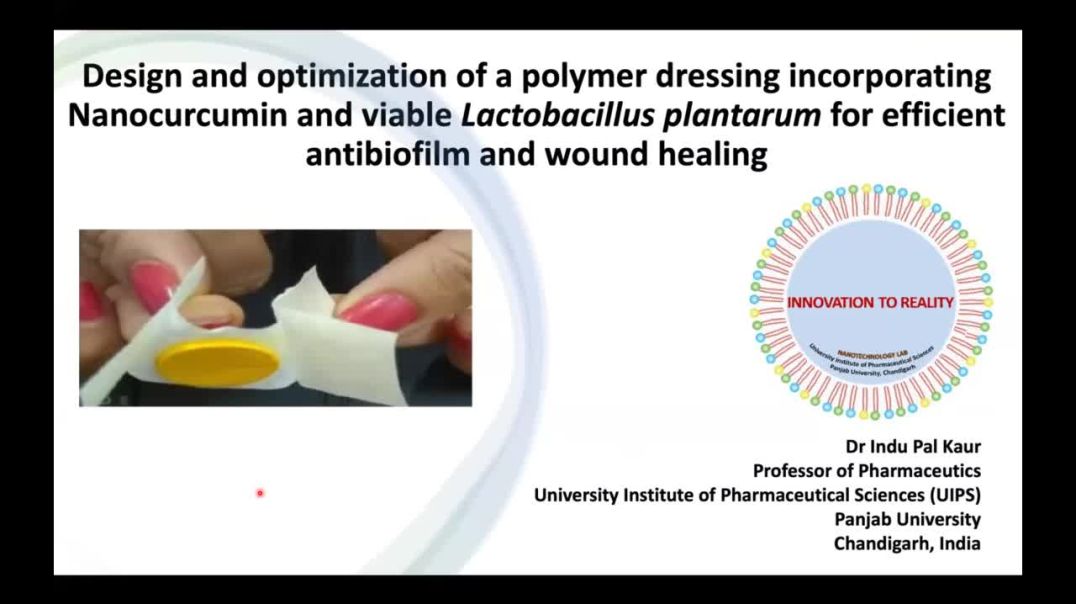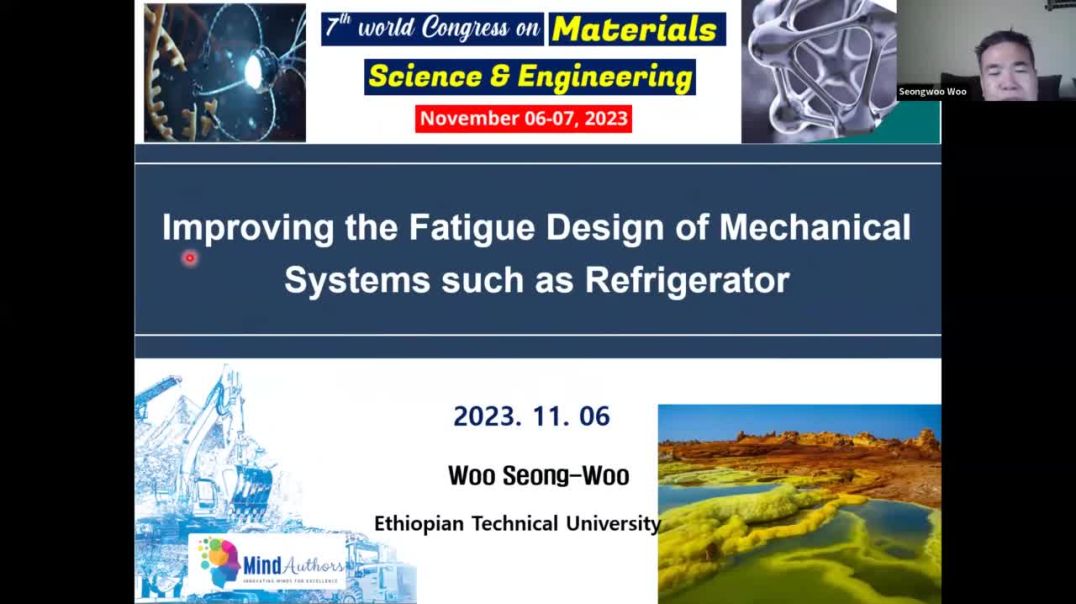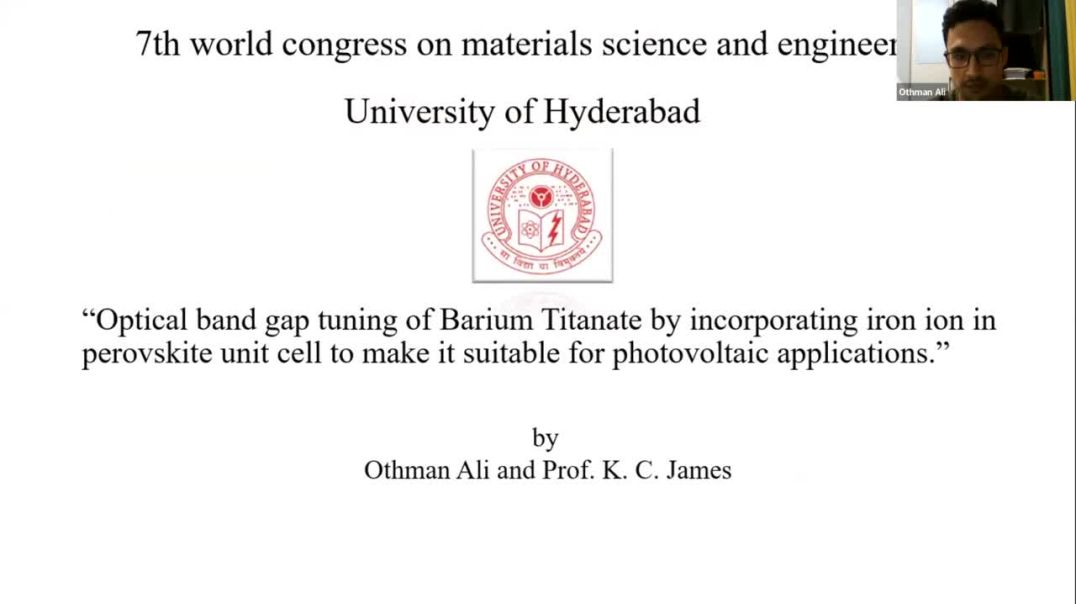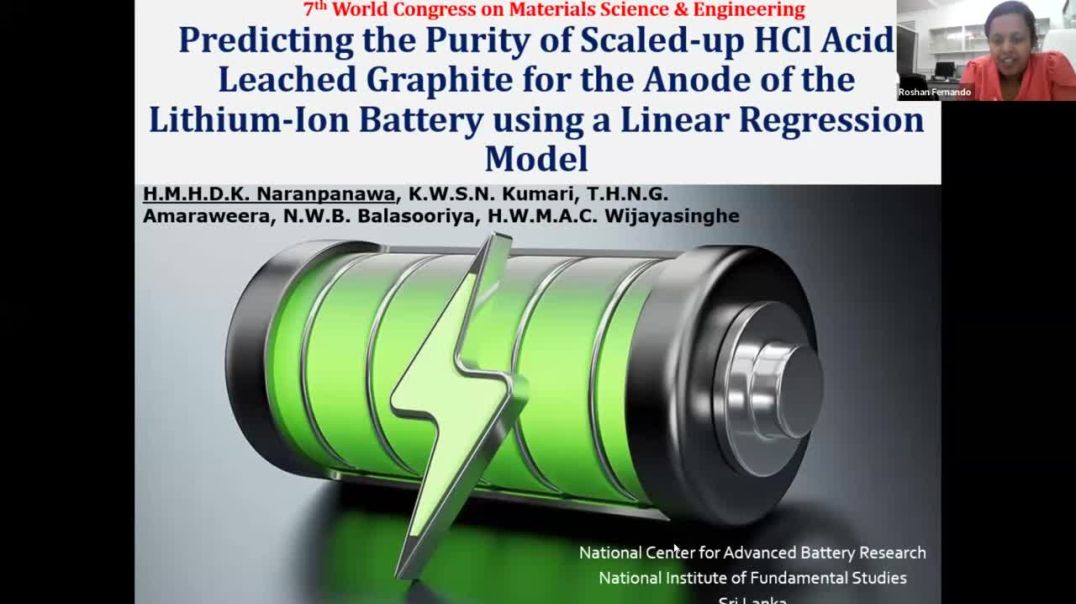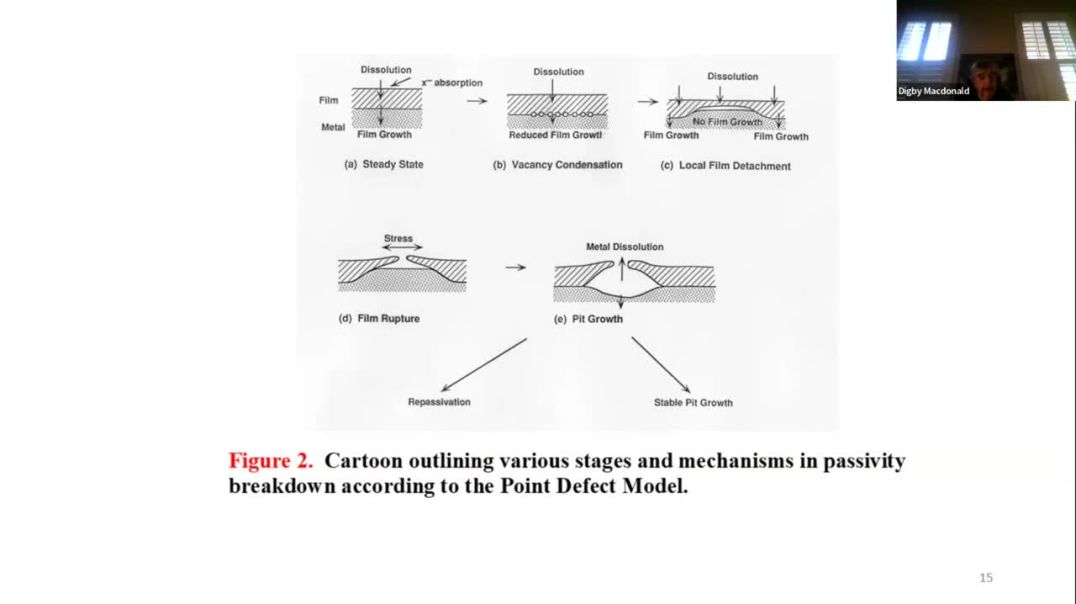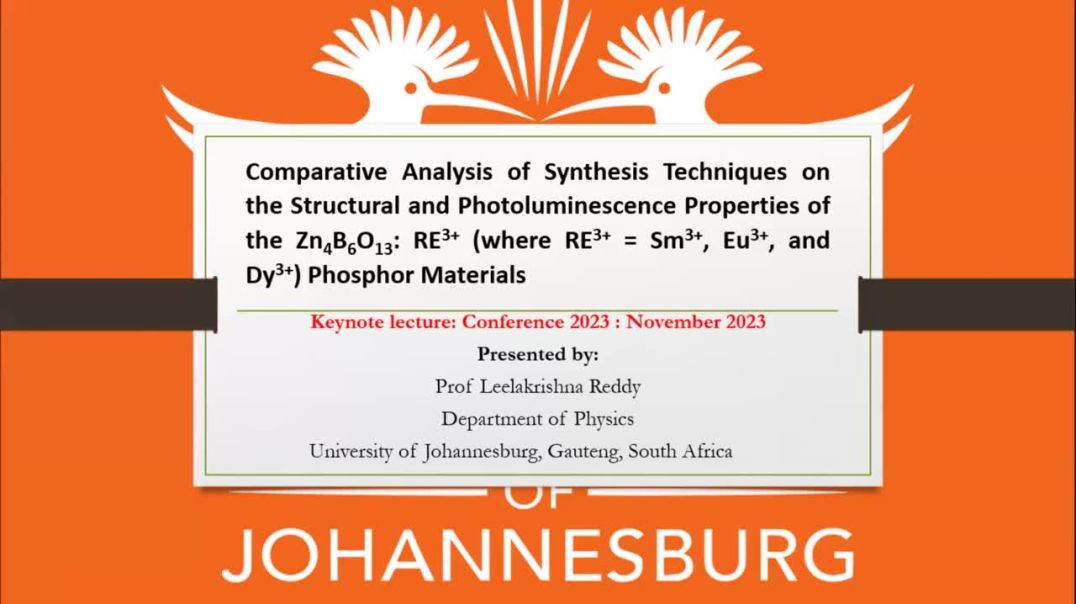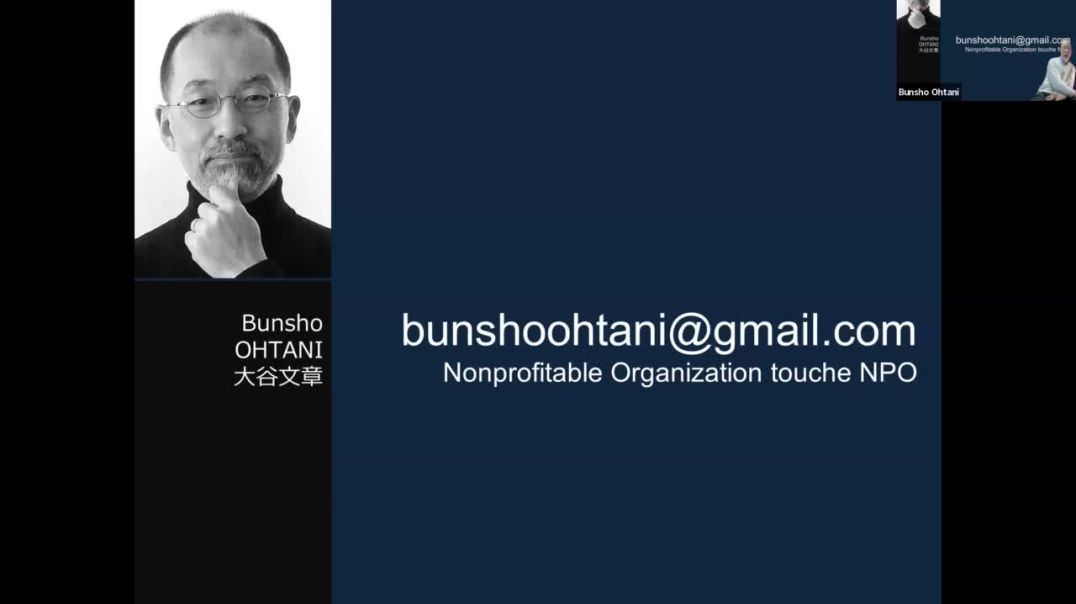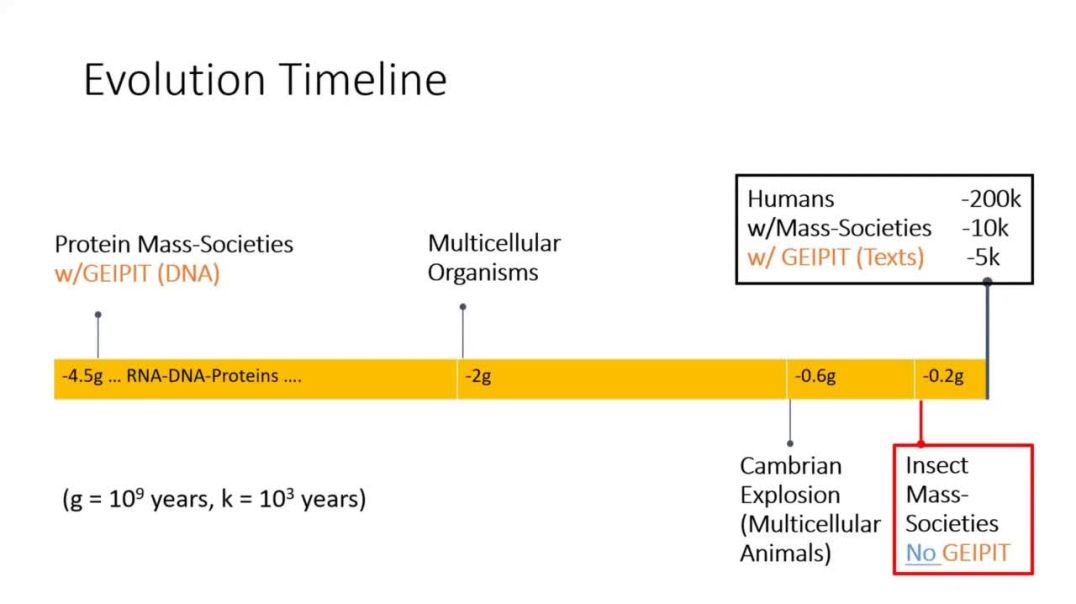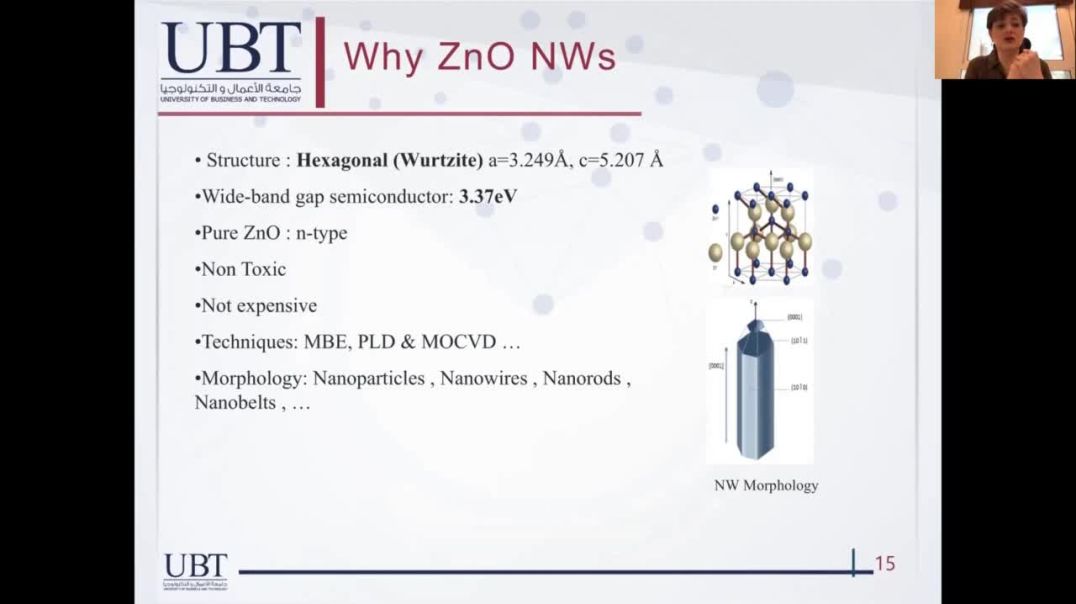Materials Science
Summary :
A series of alloy system take place in a class of functional materials due to stimulus response to external effect. Shape memory alloys take place in this group by exhibiting a peculiar property called shape memory effect. This phenomenon is characterized by the recoverability of two certain shapes of material at different conditions. Shape memory effect is initiated with thermomechanical processes on cooling and deformation, and performed thermally on heating and cooling, with which shape of the materials cycle between original and deformed shapes in reversible way. Therefore, this behavior can be called Thermal Memory or Thermoelasticity. This deformation is plastic deformation, due to the soft character of the material in low temperature condition, deformation energy is stored in the material and released on heating by recovering the original shape. These alloys are used as shape memory devices in many fields such as medicine, metallurgy, building industry. This property is result of two displacive transformations, thermal and stress induced martensitic transformations. Thermal induced martensitic transformation occurs on cooling with cooperative movements of atoms by means of lattice invariant shears in <110 > -type directions on the {110} - type planes of austenite matrix, along with lattice twinning and ordered parent phase structures turn into the twinned martensite structures. Twinned structures turn into the detwinned structures by means of stress induced martensitic transformation, by stressing material in the martensitic condition. Atomic movements are confined to the neighbor atom distances, and martensitic transformations are diffusionless or displacive transformations.
About Author :
Dr. Adiguzel graduated from Department of Physics, Ankara University, Turkey in 1974 and received PhD- degree from Dicle University, Diyarbakir-Turkey. He has studied at Surrey University, Guildford, UK, as a post- doctoral research scientist in 1986-1987, and studied were focused on shape memory effect in shape memory alloys. His academic life started following graduation by attending an assistant to Dicle University in January 1975. He became professor in 1996 at Firat University in Turkey, and retired on November 28, 2019, due to the age limit of 67, following academic life of 45 years. He supervised 5 PhD- theses and 3 M. Sc- theses and published over 80 papers in international and national journals; He joined over 120 conferences and symposia in international level with contribution. He served the program chair or conference chair/co-chair in some of these activities. Also, he joined in last six years (2014 - 2019) over 60 conferences as Keynote Speaker and Conference Co-Chair organized by different companies. Additionally, he joined over 120 online conferences in the same way in pandemic period of 2020-2022. Dr. Adiguzel served his directorate of Graduate School of Natural and Applied Sciences, Firat University, in 1999- 2004. He received a certificate awarded to him and his experimental group in recognition of significant contribution of 2 patterns to the Powder Diffraction File – Release 2000. The ICDD (International Centre for Diffraction Data) also appreciates cooperation of his group and interest in Powder Diffraction File.
Summary :
A solid-solid reaction took place at 1000°C during 4 h, using a mixture of pure iron oxide- Fe2O3 and pure zinc oxide – ZnO in order to synthesize zinc ferrite-ZF of different compositions: (S1) Fe2O3/ZnO:3/2, (S2) Fe2O3/ ZnO:1/1, (S3) Fe2O3/ZnO:4/1 and (S4) Fe2O3/ ZnO:2/1. Each of these mixtures were milling during 24 h before the thermic treatment carried out. S1, S2, S3 and S4 samples were became to M1, M2, M3 and M4 samples respectively, which after that were thermally characterized using DSC, DTA and TG techniques. In sequence the ZF produced were examined using XRD, optical and magnetic techniques, SEM & TEM. XRD analysis shows up as contains of equimolar ZF: M3 (73.20%), M4 (28.00%) and M2 (2.10%) as non-stoichiometric phases of ZF: 31.80% of Zn0.95Fe1.78O3.71 and 30.40 % of Zn1.08Fe1.92O4 in M4; Zn0.97Fe2.02O4 in M3 and 35.30% of Zn0.54Fe2.46O4 in M1. Previous studies of magnetic characterization observed a little hysteresis of this equimolar ZF. The results of estimation of the band gap energy (Eg) via the manipulation of the Kubelka-Munk theory allowed to determine that the samples M1, M2, M3 and M4 are considered semiconductors (3.66 and 3.76 eV).
About Author :
Doctor and Master Science in Materials Engineering and Metallurgy by Pontifical Catholic University of Rio de Janeiro- Brazil. Now is a Senior Researcher Professor at Materials Science and Metallurgical Engineering Department of College of Geological, Mining and Metallurgical Engineering - FIGMM of the National University of Engineering-UNI and Chief of Ironmaking and Steelmaking Researcher Group FIGMM UNI. Prof. Gomez-Marroquin is the founding partner and the first president of the board of directors of Metallurgy, Materials and Minerals Peruvian Association-APMMM. Today, she is working in characterizations of different nature biomass such as biochar from olive stone and chicken eggshell for recovering heavy metals from mining wastes. Has been working on the following subjects: recovering metals of Linz Donawitz sludge (LDS), Electric Arc Furnace Dusts (EAFD), and Basic Oxygen Furnace (BOF) using techniques of selfreduction and carbothermic reduction. Also, she had worked in reduction by CO-CO2 mixtures gases of zinc ferrite pure and zinc ferrite present into Electric Arc Furnace Dusts - EAFD using different techniques as such: X-Ray Diffraction (using the Rietveld method), Transmission Electron Microscopy and Scanning Electron Microscopy. About ZF pure and present into EAFD, she has researches that had been onsets with the characterization of the compounds present in EAFD - Iron (III) oxide, zinc oxide & zinc ferrite - using techniques, methodologies, and equipment for thermal characterization (DTA-TGA), structural (XRD), microscopic (SEM-TEM coupled to EDS), physical (briquette porosity, specific gravity, average size & particle specific surface) and chemical analysis by Absorption Atomic and Fluorescence Spectrometer.
Summary :
Since it was first isolated graphene has proven to be one of the thinnest, strongest, most impermeable and a highly thermally and electrically conductive material. In order to enhance these properties in materials such as epoxy resins, graphene has been mixed in them. However, the graphene dispersibility and quality is not always optimal and in order to perceive an effect of graphene on the properties a high concentration must be added. Carbon Waters was founded on a groundbreaking innovative graphene production process. This process leads to already dispersed graphene, Graph’Up, that can be transferred into several matrices (Fig. 1), such as polymers and epoxy resins, which gives ready to use graphene pre-mixes for many applications (coating, composites, adhesives …). Thanks to this process highly dispersed epoxy resins are obtained and ready to be formulated. By controlling the graphene concentration mixed in epoxy resin, it is possible to increase multiple properties at low concentrations: thermal resistance, mechanical properties, hydrophobicity, thermal conductivity and electrical conductivity...The increase of several of these properties can be controlled by the graphene concentration. Adding epoxy doped graphene is now a real solution to improve the resins properties or lightening the weight of the product by either applying less of it for comparable properties or using less metal additives.
About Author :
After a PhD in polymer chemistry, Lucie Chupin worked in several academic facilities always focusing her research on bio-based and environmentally friendly polymers and materials. After working at Solvay Composites, she gained expertise in epoxy resin formulation. She then joined Carbon Waters to lead the developments of graphene-based additives for polymers and composites. Her work at Carbon Waters consists in developing high added-value products tailored to customers’ needs by integrating graphene dispersions into industrial products.
Summary :
Flexible, biocompatible electrodes are essential for the development of future wearable and implantable medical devices. While silver nanowire (AgNW) networks are promising candidates for transparent conductive electrodes (TCEs), they suffer from issues such as high roughness, low adhesion, and atmospheric corrosion sensitivity. Many flexible electrodes are made of a wrinkled conductive layer on top of a compliant substrates. Wrinkles provide a way to maintain the integrity and conductivity of the electrode while it is being stretched or bent. In this study, we report on the characterization of semi-transparent electrodes on cellulose nanopaper (CNP) substrates using a plasmaenhanced pulsed laser deposition (PE-PLD) technique. We combined AgNW with titanium nitride (TiN) layers to form wrinkled conducting nano-composite coatings with excellent electromechanical properties. Our results show that the incorporation of AgNW into TiN coatings improves the electrode’s electro-mechanical robustness. Additionally, our data show that CNP/TiNAgNW electrodes exhibit improved stability in air compared to bare AgNW coatings with improved adhesion. These findings have important implications for the development of bio-compatible flexible electronics and could pave the way for the creation of new wearable and implantable medical devices.
About Author :
Dr. Loïk Gence is a professor of the Physics Institute of the PUC university in Chile. He received the B.S., M.S. degree in electrical engineering Engineer from the Catholic University of Louvain and holds a Ph.D. in Applied Sciences from the Ecole Polytechnique de Louvain (2010) under the supervision of Dr. V. Bayot, working on the charge transport properties characterization of low dimensional organic nanostructures. With a background in experimental physics, Dr. L. Gence is specialized in nanomaterials synthesis and characterization with a strong hands-on experience in semiconductor technology and cleanroom environment. His Research experience and interests cover several fields of applied physics from Flexible and Organic electronics, Solar Energy to 2D semiconductor devices.
Summary :
A sterile dressing was devised using a combination of sodium alginate and gelatin as the most suitable polymers along with a small quantity of gellan gum (0.1%), selected out of a range of polymers to co-incorporate a pre-optimised and autoclavable curcumin loaded solid lipid nanoparticles (CSLNs) and live probiotic (Lactobacillus plantarum). The dressing was optimized for polymer concentration and other characteristics using a central composite design. It exhibited a swelling ratio of 412 ± 36%, in vitro degradation time of 3 h, optimal water vapor transmission rate of 1516.81 ± 155.25 g/m2/day, high tensile strength, low-blood clotting index, case II transport, and controlled release of curcumin. XRD indicated strong interaction between employed polymers. FESEM revealed a porous sponge like meshwork embedded with L. plantarum and CSLNs. Polyphenolics like curcumin can improve probiotic effects. Both probiotics (bacteriotherapy) and curcumin promote wound healing via antimicrobial activity, inhibition of pathogenic toxins, immunomodulation, and anti-inflammatory actions. Combination of CSLNs with probiotic enhanced (560%) its antimicrobial effects against planktonic cells and biofilms of skin pathogen, Staphylococcus aureus 9144. The dressing degraded and released L. plantarum, which germinated in the wound bed and exhibited faster wound closure and lowered bioburden in the wound area in mice. This was coupled with a decrease in wound biomarkers and antioxidant enzymes, establishing multiple healing pathways. It was as effective as the silver nanoparticle-based marketed hydrogel dressing; however, the cost and risk of developing resistance would be much lower currently.
About Author :
Dr Indu Pal Kaur is Professor of Pharmaceutics & DPIIT-IPR Chair Professor, Panjab University, Chandigarh, India. Her research forte is enhancing bioperformance of small and large molecules using active-tailored nanoparticles and electrospun scaffolds. Her group is credited with novel nanotechnologies, including 31 filed, out of which 15 Indian and 1 US patent is granted. She is US-Fulbright fellow & has received international beamtime funding at RAL, UK - 2017; 2023. She has received numerous awards including best scientist award twice, IP award, WIPO award for inventors from national and international agencies. She has produced 26 PhDs; ~70 postgraduates; received funding of almost 100 million INR from Government and Industry; delivered >75 Invited Talks; published 155 articles with H index 52.
Summary :
COVID-19 highlighted numerous failures in our global healthcare system including overcrowded hospitals, lack of preventative versus reactionary medicine, and overall missing healthcare monitoring at home. Implantable sensors include an active area of research in which materials monitor health on-demand 24 hrs a day, 7 days a week. This invited talk will discuss how implantable sensors will revolutionize healthcare enabling us to get away from the traditional oldfashion hospital based system, which clearly was not sufficient during COVID. Several examples of implantable sensors will be provided in this talk including but not limited to the growth of sensors off of medical devices that can determine bone growth, infection, and inflammation next to orthopedic implants; the use of piezoelectric implantable sensors that can sense changes in motion to detect diseases; the use of contact lenses that can sense changes in metabolites in tears to diagnose diseases; and the use magnetic materials to sense changes in magnetic fields to diagnose diseases. In all cases, such implantable sensors are not only being used to prevent and diagnose diseases but also treat diseases. Novel materials, most notably nanomaterials, have enabled the fabrication and use of such sensors across all of medicine.
About Author :
Thomas J. Webster’s (H index: 117; Google Scholar) degrees are in chemical engineering from the University of Pittsburgh (B.S., 1995; USA) and in biomedical engineering from RPI (Ph.D., 2000; USA). He has served as a professor at Purdue (2000-2005), Brown (2005-2012), and Northeastern (2012-2021; serving as Chemical Engineering Department Chair from 2012 - 2019) Universities and has formed over a dozen companies who have numerous FDA approved medical products currently improving human health. He is currently helping those companies and serves as a professor at Hebei University of Technology, Saveetha University, UFPI, and others. Dr. Webster has numerous awards including: 2020, World Top 2% Scientist by Citations (PLOS); 2020, SCOPUS Highly Cited Research (Top 1% Materials Science and Mixed Fields); 2021, Clarivate Top 0.1% Most Influential Researchers (Pharmacology and Toxicology); 2022, Best Materials Science Scientist by Citations (Research.com); and is a fellow of over 8 societies. Prof. Webster is a former President of the U.S. Society For Biomaterials and has over 1,350 publications to his credit with over 53,000 citations. He was recently nominated for the Nobel Prize in Chemistry (2023).
Summary :
Twenty two RNA therapies reached the medical market by Q1 2023. Targeted intracellular delivery remains the key requirement. For refinements of nanocarriers we focus on a bioinspired, sequence-defined process including (i) artificial amino acids (ii) precise assembly into sequences by solid phase-assisted synthesis (iii) screening for delivery and selection of top candidates. A recent chemical evolution library combined aminoethylene amino acids as polar protonatable units with novel lipo amino fatty acids (LAFs) as hydrophobic protonatable motifs. These novel double pH-responsive nucleic acid carriers utilize intracellular delivery mechanisms of both cationizable lipids and cationic polymers. The endosomal pH-dependent tunable polarity of LAF was successfully implemented by a central tertiary amine, which disrupts the hydrophobic character once protonated, resulting in drastic pH-dependent change in the logarithmic (octanol/ water) distribution logD from around +1 (pH 7.4) to -1 (pH 5.5). This “molecular chameleon character” turned out to be advantageous for mRNA, siRNA or CRISPER/Cas9 sgRNA delivery. The efficiency of best performers was up to several 100-fold higher compared to previous carriers. Transfection activity of mRNA lipoplexes was maintained even in the presence of 90% serum and at extremely low dosage of 3 pg mRNA (~2 nanoparticles/cell), in the range of the viral potency. mRNA lipoplexes showed great in vivo performance in mice with high expression levels in spleen, tumor, lung, and liver upon intravenous administration of 1 μg luciferase mRNA.
About Author :
Ernst Wagner is professor of Pharmaceutical Biotechnology and Center of NanoScience at LMU Munich since 2001. From 1992-2001 he was Director Cancer Vaccines, Boehringer Ingelheim (first polymer-based gene therapy trial in 1994), 1987-1995 group leader at IMP Vienna and Vienna University Biocenter, 1985-1987 postdoc at ETH Zurich, in 1985 PhD in chemistry (TU Vienna). He is Academician of European Academy of Sciences, member of CRS College of Fellows, Board member of German Society for Gene Therapy. He has authored 500 publications, with 50 503 citations, h-index 112 (GS).
Summary :
Rapid manufacturing on space/air/sea/land missions, where either gravitational force is missing or severe random disturbance may present continuously, is highly in demand. However, till today, there is no reliable technique for such working environments. The purpose of this study is to develop a technology for rapid 3D printing in solid state of polymeric materials to get rid of the problems in harsh working environment. The basic concept is to cross-link by either UV-light or photo-induced-heat of polymeric materials in the solid state for rapid volumetric additive manufacturing. The uncross-linked parts can be removed by heating or cooling for melting, or washing away by solvent. Finally, the shape memory effect (SME) of the cross-linked polymers is applied to ensure high accuracy of the printed items. We have successfully demonstrated this concept using thermal gel, UV cross-linkable vitrimer and other conventional materials.
About Author :
Dr Wei Min Huang has over 25 years of experience on various shape memory materials (alloy, polymer, composite and hybrid), he has published over 200 papers in journals, such as Accounts of Chemical Research, Advanced Drug Delivery Reviews, and Materials Today, and has been invited to review manuscripts from over 300 international journals (including Progress in Polymer Science, Nature Communications, Advanced Materials, and Advanced Functional Materials, etc), project proposals from American Chemical Society, Hong Kong Research Grants Council, etc, and book proposals from Springer, Elsevier and CRC. He has published two books (Thin film shape memory alloys – fundamentals and device applications, Polyurethane shape memory polymers) and is currently on the editorial board of over three dozen of journals.
Summary :
A new and upgraded approach to the diseased states and wellness resulted in a new trend in the healthcare services, namely, personalized and precision medicine (PPM). The latter does need to be drastically and globally re-armed and re-innovated! To achieve the implementation of PPM con-cept, it is necessary to create a fundamentally new strategy based upon the biomarker-guided target-ing and bionavigating to have a unique impact for the implementation of PPM model into the daily Clinical Practice, Biotech and Biopharma. In this sense, despite breakthroughs in research that have led to an increased understanding of PPM-controlled human disease, the translation of discoveries into therapies for patients has not kept pace with medical need. It would be extremely useful to in-tegrate data harvesting from different databanks for applications such as prediction and personali-zation of further treatment to thus provide more tailored measures for the patients and persons-at-risk resulting in improved outcomes and more cost effective use of the latest health care resources including diagnostic (companion ones and/or theranostics), preventive and therapeutic (targeted molecular and cellular) etc. Bio-designers, Bioengineers and Biomanufacturers are beginning to realize the promise of PPM, translating to direct benefit to patients or persons-at-risk. For instance, companion diagnostics tools (CDTs), theranostics and targeted therapies represent important stakes for the Biotech & Biopharma, in terms of market access, of return on investment and of image among the prescribers.
About Author :
A new and upgraded approach to the diseased states and wellness resulted in a new trend in the healthSergey Suchkov was born in the City of Astrakhan, Russia, in a family of dynasty medical doc-tors. In 1980, graduated from Astrakhan State Medical University and was awarded with MD. In 1985, Suchkov maintained his PhD as a PhD student of the I.M. Sechenov Moscow Medical Academy and Institute of Medical Enzymology. In 2001, Suchkov maintained his Doctor De-gree at the National Institute of Immunology, Russia. From 1989 through 1995, Dr Suchkov was being a Head of the Lab of Clinical Immunology, Helmholtz Eye Research Institute in Moscow. From 1995 through 2004 - a Chair of the Dept for Clinical Immunology, Moscow Clinical Re-search Institute (MONIKI). In 1993-1996, Dr Suchkov was a Secretary-in-Chief of the Editorial Board, Biomedical Science, an international journal published jointly by the USSR Academy of Sciences and the Royal Society of Chemistry, UK.care services, namely, personalized and precision medicine (PPM). The latter does need to be drastically and globally re-armed and re-innovated! To achieve the implementation of PPM con-cept, it is necessary to create a fundamentally new strategy based upon the biomarker-guided target-ing and bionavigating to have a unique impact for the implementation of PPM model into the daily Clinical Practice, Biotech and Biopharma. In this sense, despite breakthroughs in research that have led to an increased understanding of PPM-controlled human disease, the translation of discoveries into therapies for patients has not kept pace with medical need. It would be extremely useful to in-tegrate data harvesting from different databanks for applications such as prediction and personali-zation of further treatment to thus provide more tailored measures for the patients and persons-at-risk resulting in improved outcomes and more cost effective use of the latest health care resources including diagnostic (companion ones and/or theranostics), preventive and therapeutic (targeted molecular and cellular) etc. Bio-designers, Bioengineers and Biomanufacturers are beginning to realize the promise of PPM, translating to direct benefit to patients or persons-at-risk. For instance, companion diagnostics tools (CDTs), theranostics and targeted therapies represent important stakes for the Biotech & Biopharma, in terms of market access, of return on investment and of image among the prescribers.
Summary :
To enhance the lifetime of mechanical system such as automobile, new reliability methodology – parametric Accelerated Life Testing (ALT) – suggests to produce the reliability quantitative (RQ) specifications— mission cycle—for identifying the design defects and modifying them. It incorporates: (1) a parametric ALT plan formed on system BX lifetime that will be X percent of the cumulated failure, (2) a load examination for ALT, (3) a customized parametric ALTs with the design alternatives, and (4) an assessment if the system design(s) fulfil the objective BX lifetime. So we suggest a BX life concept, life-stress (LS) model with a new effort idea, accelerated factor, and sample size equation. This new parametric ALT should help an engineer to discover the missing design parameters of the mechanical system influencing reliability in the design process. As the improper designs are experimentally identified, the mechanical system can recognize the reliability as computed by the growth in lifetime, LB, and the decrease in failure rate. Consequently, companies can escape recalls due to the product failures from the marketplace. As an experiment instance, two cases were investigated: 1) problematic reciprocating compressors in the French-door refrigerators returned from the marketplace and 2) the redesign of hinge kit system (HKS) in a domestic refrigerator. After a customized parametric ALT, the mechanical systems such as compressor and HKS with design alternatives were anticipated to fulfil the lifetime – B1 life 10 year.
About Author :
Dr Woo has a BS and MS in Mechanical Engineering, and he has obtained PhD in Mechanical Engineering from Texas A&M. He majors in energy system such as HVAC and its heat transfer, optimal design and control of refrigerator, reliability design of thermal components, and failure Analysis of thermal components in marketplace using the Non-destructive such as SEM & XRAY. In 1992.03–1997 he worked in Agency for Defense Development, Chinhae, South Korea, where he has researcher in charge of Development of Naval weapon System. He was working as a Senior Reliability Engineer in Refrigerator Division, Digital Appliance, SAMSUNG Electronics. Now he is working as associate professor in mechanical department, Ethiopian Technical University.
Summary :
In this research work, the energy band gap of Bi & Li doped BaTiO3 has been reduced by the incorporation of metal ion (Fe+3). The results show that the lattice distortion as well as the defect formation in the perovskite unit cell gives rise to a narrower band gap which is useful for photovoltaic applications. Solid state reaction method was followed to prepare the samples. Five samples were prepared with different Fe concentrations Ba0.96Bi0.02Li0.02Ti1-xFexO3, where x = 0.00, 0.02, 0.04, 0.06, and 0.08. The powders were weighed and ground using ball milling for 4 hours. The powders were kept for calcination at 1100 ˚C for 6 hours. Afterwards, the calcined powders were axially pressed to form circular pellets which kept for sintering at 1250 ˚C for 4 hours using conventional furnace. The structural investigations were confirmed via XRD and Raman analyses. Measurements showed crystal structure transition from tetragonal to hexagonal phase with respect to the Fe concentration. Rietveld refinement was performed to obtain the structural information. The octahedral distortion and the average bond length variation have been calculated to interpret the variation in the energy band gap. This material has shown the Jahn-Teller effect which gives rise to 3d orbital splitting leading to narrower band gap. The optical band gaps were calculated using Tauc-plot and Kubelka-Munk function from the DRS spectra. To confirm the existence of oxygen vacancies, ESR measurement has been carried out and analyzed. The energy band gap of the sample x = 0.08 showed the narrowest band gap of 2 eV, which paves the way for this composition to be used for visible range photovoltaic applications.
About Author :
My name is Othman Ali, Iraqi national. I have completed my BSc. from School of Physics, Tikrit University, Iraq. Afterwards, I studied MSc. in Physics, Department of Studies in Physics, Mysore University, India. Now I am pursuing my Ph.D. in Physics, School of Physics, University of Hyderabad, India.
Summary :
Lithium-ion batteries (LIB) have become one of the main storage devices for consumer electronic products. Natural vein graphite has been identified as a potential anode material in LIB, with a purity requirement of over 99.5%. The HCl acid leaching purification method has shown its success in achieving that target at laboratory scale. However, in order to move to commercial production, the purification process needs to be scaled up. Already, a considerable gap exists between laboratory-level achievements and commercialization. In this perspective, making prior scientific predictions of the purity of scaled-up purified graphite will make it easier to make more accurate scientific decisions on the scaling-up process. For that, purified graphite samples were scaled up using the quartile formula at the laboratory level, and the developed graphite samples were characterized. A linear regression model was then developed to predict the purity of the scaled-up graphite with the higher volumes of acid-leached solution used in the HCl acid leaching method. The resulting model showed a significant P-value of 0.000, indicating that it is feasible and effective in forecasting the purity of the scaled-up graphite samples. The fitted model could explain 99.54% of the variation in the volume of acid solution used in the HCl acid leaching method. The model was validated, and its assumptions were verified by performing residual analysis with a significance level. The present study reveals that the best linear regression model for higher volumes was developed using proportional rules for masses and volumes in accordance with the quartile formula. Therefore, this approach could be beneficial in generating precise scientific predictions to scale up the purification process of vein graphite.
About Author :
Himashee Naranpanawa is a postgraduate researcher attached to the National Center for Advanced Battery Research (NCABR) of National Institute of Fundamental Studies, Kandy, Sri Lanka. She received her B.Sc. in Mineral Resources and Technology specializing Mineral Processing Technology from the Uva Wellassa University of Sri Lanka in 2017 and currently reading for the M.Phil. Degree from the University of Peradeniya, Sri Lanka. Her research work focuses mainly on purification/modification aspects of natural vein graphite with special attention on scaling-up/optimization, for the anode application in rechargeable batteries.
Summary :
We reported a method for the removal of crystal violet (CV) dye from wastewater excreted by textile industries. Here, we employed the use of reduced graphene oxidesupported nanoscale zero-valent iron (nZVI/rGO) nanocomposite along with H2O2 for CV removal. For this purpose, nZVI/rGO nanocomposite was prepared by reduction of ferrous sulfate heptahydrate (FeSO4⋅7H2O) and graphene oxide (GO) with sodium borohydride (NaBH4) and used as a potential sorbent for removal and/ or minimization of CV from aqueous solution. Zeta, transmission electron microscopy (TEM), UV–Visible spectroscopy, and Fourier-transform infrared spectroscopy (FTIR) were performed to characterize nZVI/rGO nanocomposite. Further, the chemical method for dye removal was also investigated using hydrogen peroxide (H2O2) as a chemical reductant. The effects of nanocomposite concentration, temperature, and time were examined to evaluate their role in dye elimination. The concentration of CV in the aqueous solution was calculated by studying absorbance using a UV–Visible spectrophotometer. The use of both H2O2/ nZVI-rGO provided a synergistic effect and resulted in efficient and fast removal of CV from an aqueous solution.
About Author :
Professor Minakshi Sharma studied Zoology at Maharshi Dayanand University and completed her post-graduation in 1994. She then received her degree of Ph.D. in 2005 from the same university in Biosensing and Nanotechnology. She joined as an assistant professor at college, M.D. University, Rohtak up to 2009. Then joined as a reader in Deptt. of Zoology, M.D. University, Rohtak from 2009-2012 and as an associate professor from 2012-2015 in same. From 2015 to till date she is working as a professor in the same Deptt. of M.D. University. She has attended 70 National/International conferences and has published approx. 60 research papers.
Emerging Non-volatile Electronic Memory Devices from Polymer to Graphene Derivatives | Iulia Salaoru
Summary :
In recent years, the interest in non-volatile memory (NVM) has shown a rapid increase from both perspectives from academia and industry. The factors driving this intense interest are mainly attributed to their simple (two-terminal), zero power draw for sustaining a state, high-speed operation, good endurance but also their multi-state capacity. Solid state implementations of these devices show great potential in applications such as: reconfigurable architecture, neuromorphic computing and artificial synapses. Numerous candidates for emerging electronic memory technologies such as ferroelectric (FeRAM), phase-change random access memory (PCRAM), magneto-resistive (MRAM), resistive random-access memory (ReRAM), organic memory and more recently graphene derivatives have been proposed and investigated by a number of research groups worldwide. The main functional property of NVM cells is toggling between distinct electrical conductance states when SET and RESET potentials are applied, with a state being sensed by an intermediate read voltage. Current research efforts are focused on determining the physical switching mechanism that facilitates the bistability behavior, particularly in Graphene Derivatives and polymer memory devices. This talk will encompass two of the most investigated non-volatile memories: polymer and graphene oxide-based memory. The possible physical switching/charging mechanism(s) along with experimental evidence will be presented in this work. Along with the electrical experimental results, we have also used the chemical characterization tools to further understand the operating mechanism(s). This will be presented as well.
About Author :
Dr Iulia Salaoru received a BSc (Physics), MSc (Physics) degree from the “Al. I. Cuza” University, Iasi, Romania, where she also awarded a PhD degree for her work on AIIBVI semiconducting compounds. Since completing her PhD, she has worked as a Postdoctoral Researcher at: Emerging Technologies Research Centre, De Montfort University, Leicester; Centre for Bio-inspired Technology, Imperial College London; Nanofabrication Centre, University of Southampton and Warwick Manufacturing Group (WMG), University of Warwick. Currently, Dr Iulia Salaoru is Associate Professor in Materials Science and Engineering at De Montfort University, Leicester, UK
Summary ;
CuO is currently used in various type of applications including gas sensors, solar energy conversion, photocatalysis, and lithium-ion batteries (LIBs). Among them, CuO has been found more attentions for LIBs due to its high theoretical capacity (674 mAhg-1), good capacity retention, low cost, non-toxic nature, and ease of storage. The electrochemical performances of CuO mainly depend on crystallinity and morphology, which significantly depend on the synthesizing technique. The hydrothermal method, which is a promising process that improves the crystallinity with favorable morphology for electrode materials has not well been studied and hence this study aims for preparing CuO anode materials using the hydrothermal method. The coin cells were assembled in an argon-filled glove box with anodes fabricated with synthesized CuO, lithium as the reference electrode and counter electrodes, and non-aqueous electrolyte of 1M LiPF6 in ethylene carbonate and dimethyl carbonate (1:1wt%). Galvanostatic chargedischarge testing performed on the cells showed a significantly high initial specific discharge capacity of 987.3 mAhg-1 while maintaining high Coulombic efficiency of around 99% over 50 cycles. Even though higher irreversible capacity of 313.8 mAhg-1 showed for the 1st cycle, a lower irreversible capacity of 7.6 mAhg- 1 showed for the 50th cycle.
About Author :
Roshan Fernando is currently a Research Assistant attached to the Nanotechnology and Advanced Materials project of the National Institute of Fundamental Studied (NIFS). He has obtained his first degree in Physics from the University of Kelaniya in 2014 and M.Phil in Material Physics from the University of Kelaniya in 2019. He joined the NIFS in 2020 and now reading for his PhD from the Postgraduate Institute of Science, University of Peradeniya. His research focuses on the development of electrode and electrolyte materials for novel rechargeable batteries. His research interests include synthesis materials for energy storage systems and electrochemistry for energy storage applications.
Summary :
The various forms of localized corrosion, including pitting corrosion (PC), stress corrosion cracking (SCC), corrosion fatigue (CF), electropolishing (EP), and flowassisted corrosion (FAC) are generally treated as separate phenomena although the fall under the umbrella of the differential aeration hypothesis (DAH). In this paper, I reveal a theoretical basis, in addition to the DAH, for unifying all forms of localized corrosion. The treatment makes use of the condition imposed by the Point Defect Model (PDM) for defining the conditions for the passivity of a metal and inquiring as to the events that occur at the point of nucleation. For example, in the case of passivity breakdown, which is the precursor to pitting, it is essential for the barrier oxide layer to be prevented from continued growth into the substrate metal. This occurs via condensation of cation vacancies on the cation sublattice at the metal/barrier layer interface such that the barrier layer is no longer in contact with the metal. However, outside of the nucleus, the barrier layer is still in contact with the metal and growth of the barrier layer into the metal continues via the generation of new (film) cations and oxygen vacancies. Simultaneously, dissolution of the battier layer continues at the barrier layer/solution interface with the result that the barrier layer thins preferentially over the pit nucleus. At some point the barrier layer “cap” over the nucleus ruptures allowing the intrusion of water and eventually to the establishment of differential aeration. At that point, the cavity actively grows to form an active pit.
About Author :
Digby D. Macdonald is Professor in Residence in the Departments of Nuclear Engineering and Materials Science and Engineering at the University of California at Berkeley. He specializes in the growth and point defect structures of thin oxide films on metal surfaces and developed the Point Defect Model for describing such systems. He also developed the modern theory of stress corrosion cracking, corrosion fatigue, and pitting corrosion in terms of the deterministic Coupled Environment Models and is a pioneer modern Electrochemical Impedance Spectroscopy. One of his major activities is the modeling of the electrochemical and corrosion properties of structural materials in the coolant circuits of operating, water-cooled nuclear reactors. He has published more than 1000 papers in peer-reviewed journals and conference proceedings and four books. He is a Fellow of the Royal Society of Canada, the Royal Society of New Zealand (the “National Academies” of those countries.
Summary :
Various chemical synthesis techniques, including sol-gel, combustion, and solid-state reactions, offer promising opportunities for generating high-purity nanophosphors with diverse morphologies. In this project, we aim to conduct a comparative study on the structural and photoluminescence properties of Zn4B6O13: RE3+ (where RE3+ = Sm3+, Eu3+, and Dy3+) nanophosphors using the above-mentioned techniques. To date, no such comparative study based on different synthesis techniques have been reported. However, from our literature survey we have conducted, we have discovered that these methods have a profound effect on the structural and photoluminescence characteristics of these prepared phosphor materials, making it imperative to investigate their effects on the highly crystalline Zn4B6O13: RE3+ (where RE3+ = Sm3+, Eu3+, and Dy3+) nanophosphors.
About Author :
Prof. L Reddy, a distinguished scholar, earned his prestigious PhD in Physics from the esteemed University of Johannesburg in South Africa. With a profound expertise in condensed matter physics, he has consistently demonstrated a fervent passion for research and exploration. Initially delving into the magnetic properties of bulk materials, Prof. Reddy has since shifted his focus towards the captivating realm of luminescent properties in phosphor materials. This captivating field opens exciting avenues in diverse applications such as phototherapy, energy storage in battery cells, light-emitting devices, and cuttingedge display lighting systems. As a visionary leader, Prof. Reddy leads a dedicated research team that explores magnetic properties at the nanoscale level, pushing the boundaries of scientific understanding in this domain. His contributions to the scientific community are invaluable, with a prolific publication record in esteemed peer-reviewed journals. Recognized for his expertise, he is frequently invited to deliver keynotes and invited lectures at prestigious conferences worldwide, illuminating current topics in nanotechnology. Prof. Reddy’s mentorship has played a pivotal role in nurturing future talent, as he has successfully supervised numerous MSc and PhD students, leaving an enduring impact on the scientific landscape. In South Africa, he is esteemed as an NRF-rated scientist, a testament to his remarkable contributions and dedication to advancing the field of nanotechnology. He envisions nanotechnology as the vanguard of solving contemporary challenges in medicine, health, battery technology, lighting devices, communication technology, and solar cells, making him a catalyst for innovative solutions that benefit humanity.
Summary :
How can we design functional solid materials, such as catalysts and photocatalysts? What is the decisive structural parameters controlling their activities, performance or properties? What is obtained as structural properties by popular conventional analytical methods, such as X-ray diffraction (XRD) or nitrogen-adsorption measurement, is limited to bulk crystalline structure and specific surface area, i.e., no structural characterization on amorphous phases, if present, and surface structure has been made so far. This is because there have been no macroscopic analytical methods to give surface structural information including possiblypresent amorphous phases. Recently, we have developed reversed double-beam photoacoustic spectroscopy (RDB-PAS) which enables measure energy-resolved distribution of electron traps (ERDT) for semiconducting materials such as metal oxides [1,2]. Those detected electron traps (ETs) seem to be predominantly located on the surface for almost all the metal oxide particles, and therefore they reflect macroscopic surface structure, including amorphous phases, in ERDT patterns. Using an ERDT pattern with the data of CB bottom position (CBB), i.e., an ERDT/ CBB pattern, it has been shown that metal oxide powders, and the other semiconducting materials such as carbon nitride, can be identified without using the other analytical data such as XRD patterns or specific surface area, and similarity/ differentness of a pair of metal-oxide samples can be quantitatively evaluated as degree of coincidence of ERDT/CBB patterns.
About Author :
The research work on photocatalysis by Professor Bunsho Ohtani started in 1981 when he was a Ph. D. course student in Kyoto University. Since then, he has been studying photocatalysis and related topics for 40 years and published more than 300 original papers (h-index: 70) and two single-author books. After gaining his Ph. D. degree from Kyoto University in 1985, he became an assistant professor in the university. In 1996, he was promoted to an associate professor in Graduate School of Science, Hokkaido University and was then awarded a full professor position in the Catalysis Research Center (presently Institute for Catalysis), Hokkaido University in 1998 and retired at the end of March 2022. He was awarded several times form the societies related to chemistry, photochemistry, electrochemistry and catalysis chemistry.
Summary ;
This paper concerns the sudden advent of unique bio-mathematical self-similarity across >9 orders of magnitude based on T-patterns; self-similar patterns repeated with significant translation symmetry in the temporal structure of neuronal, animal, and human behavior and in information molecules and texts, unique self-similarity arising in an eyeblink after half a billion years of evolution in multicellular life, that is, between unicellular life and modern masssocieties, between the mass-societies of proteins in cells and human mass-societies; themselves composed of cells. This project began in the 1970’s much inspired by N. Tinbergen, K. Lorenz, and K. von Frisch’s research on animal and human social behavior winning the Nobel Prize in Physiology or Medicine in 1973, the first in the biology of behavior, Ethology. Insects were then the smallest animals studied and none were components of the others, no nanoscale actors nor self-similarity. Billions of years ago, the RNA world invented extra individual purely informational T-strings, DNA, and soon there was only the DNA world of DNA based mass-social proteins (cells). Billions of years later in a multicellular world, humans invented extra individual purely informational T-strings – TEXT, and now nearly all human life is TEXT-based and masssocial, unique self-similarity allowing in an eye blink the advent of modern science, and technology. -- DNA has nano scale elements, but TEXT can be of any scale.
About Author :
Magnus S. Magnusson, PhD, Emeritus Research Professor, founder, and director of the Human Behavior Laboratory (hbl.hi.is), School of Health Sciences, University of Iceland. Author of the T-system, detection algorithms and software THEMETM (PatternVision. com), initially focusing on real-time organization of behavior. Co-directed of two-year project “DNA analysis with Theme”. Keynotes in biology, neuroscience, mathematics, science of religion, proteomics, A.I., robotics and nanoscience. Associate Professor and Deputy Director 1983-1988 in the Museum of Mankind of the French National Museum of Natural History, Paris. Repeatedly, invited Professor at the University of Paris V, VIII & XIII. Now works in formal collaboration between 32 European and American universities initiated 1995 at the University Rene Descartes of Paris V, Sorbonne, based on “Magnusson’s analytical model”.
Summary :
Solar energy is converted to electrical potential by a sequence of events: the absorption of light, generation of charges carriers (electrons and holes), the separation of the electrons from holes and their transport to electrodes. Great attention has been given to solar cells due to their promising in their electricity conversion efficiency, their simple device fabrication process and their low cost. Zero dimensional nanostructures have gained interest due to their unique properties especially tuning their band gap based on their size. Graphene has recently emerged as an alternative to ITO substrate as an electrode in solar cells structure. With its remarkable electrical, physical and chemical properties, and high degree of flexibility and transparency; it is considered as an ideal candidate for flexible 3rd generation solar cells, the graphene solar cells an eco- green technology is getting to the same level of ITO based solar cells. This presentation is about presenting a flexible quantum dots sensitized solar with graphene electrode .
About Author :
Basma El Zein, PhD, SMIEEE, Solar Pioneer, Lifetime Achiever. Director General , Governance and sustainability Center at the University of Business and Technology (UBT). She has 22 years of experience in academic and research institution. She was the founder and dean of scientitifc Research at UBT, Research Scientist at KAUST, and an associate researcher at IEMN, Lille, France. Her recent research interests include working on nanostructures for third generation solar cells, energy harvesting and energy storage. She gained 2 grants, to support her research on Nanostructures for Photovoltaic applications. She is a reviewer in many international, peer-reviewed journals, the chair or co-chair and on the committee of different international conferences; she published in many international journals and had one patent filed in USA.
